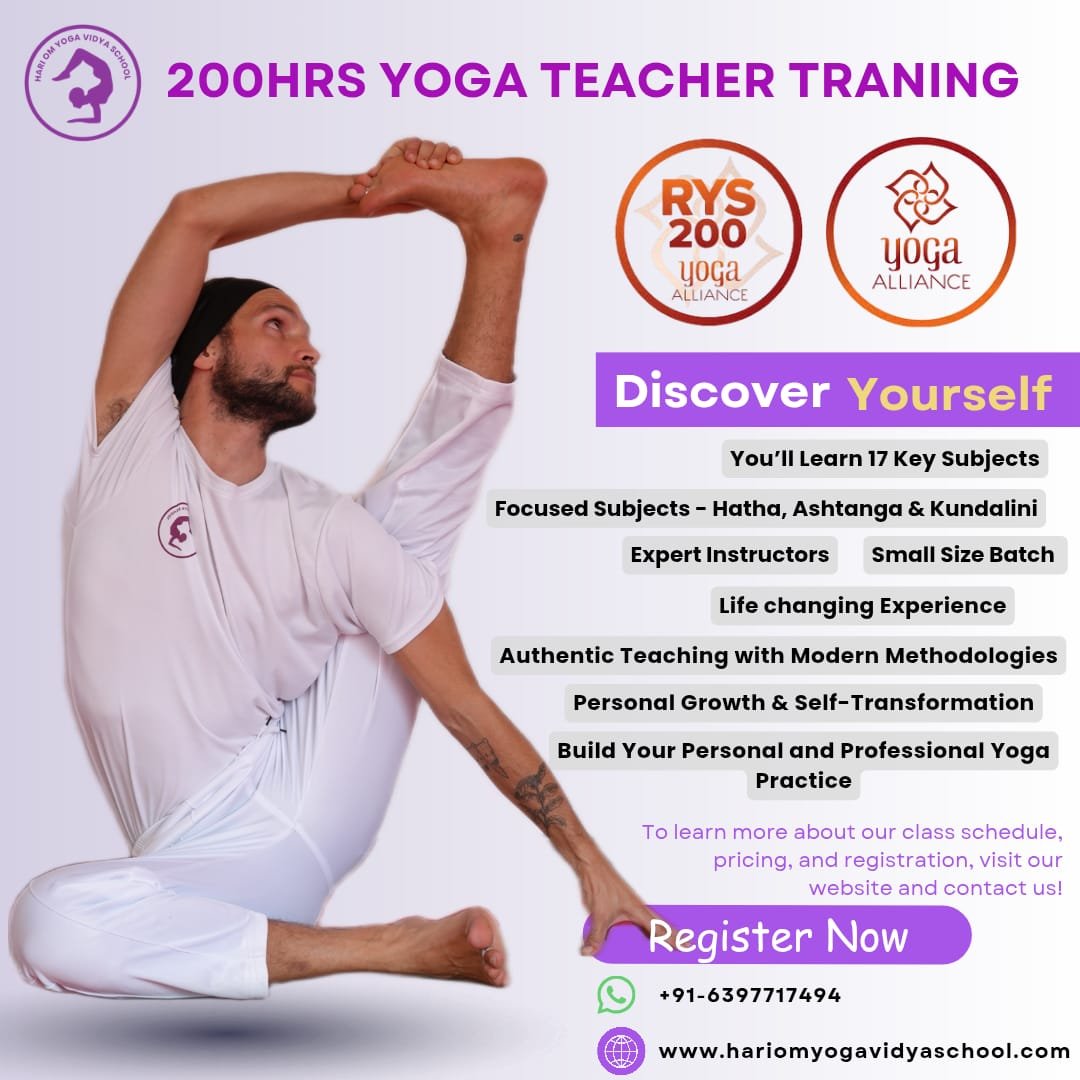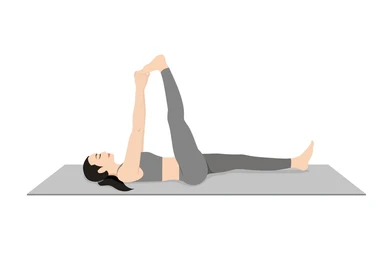Supta Konasana With Variations
What is Supta Konasana?
Supta Konasana is one of the poses in the Ashtanga Primary series, that can prepare you for more advanced inverted asanas. It is also called a restorative pose, for the very same reason. Many yoga experts also call it a more advanced version of Halasana.

As with other asanas that have been named as per Sanskrit verses, Supta Konasana also traces its lineage to the same. You can break down the meaning as underneath.
- Supta means ‘reclining or sleeping’
- Kona means ‘angle’
- Asana means ‘pose’
As sleeping rejuvenates the body, by relaxing the organs, so does the Supta Konasana. You have to perform this asana by reclining on your back, as is evident from the name. Now it’s time to delve into the deeper aspects of this restorative asana, called Supta Konasana.
How To Do The Supta Konasana?
Steps To Do Supta Konasana Variation A
You must perform this sleeping, inverted asana, under the guidance of a trained yoga expert, or else, you may end up injuring yourself.
- You have to start the asana by lying down on the ground, with your hands and legs spread out.
- Inhale and then swing the legs with speed, so that the toes touch the floor on the other side of the head.
- Raise both your hands and hold the big toes of the feet, in that very same pose.
- Exhale and keep on holding the toes, while spreading the legs further.
- You have to hold the position for 5-6 breaths, while keeping the spine straight.
- Then, take a deep breath and rock yourself in front, with the fingers embracing the toes.
- Exhale and sit on the floor in that position for some time.
- Inhale and leave the grip from the toes, and uplift the chest muscles.
- Bring your legs together in Dandasana, and relax.
Steps To Do Supta Konasana Variation B
In the variation, the yoga practitioner has to swing both legs over the head in the same manner as above. However, you have to hold the ankles instead of the toes.
That is the only difference.
Modifications of Supta Konasana
If you do not have expertise in doing such restorative postures, you can take assistance from props and supportive accessories.
Read More: Why Is Kundalini Yoga Dangerous? The Truth About Its Risks and Rewards
- You can use a few folded blankets under the shoulders, when you are in inverted position.
- The head and the neck stay beyond the blanket. When you overturn, the neck rests on the blankets, thus stalling any type of injury.
- You can also place two chairs, on both sides of the head. When you swing your legs in the opposite direction, you can make the legs land on the chairs. It will help you initially, in case, you are unable to land them on the floor.
- If you feel that the legs are being stretched to a huge extent, you must use blocks, and land the feet on those blocks. While doing so, you should continue to lower your groins into the pelvis.
You have to breathe normally and hold the pose for 5 breaths in the final inverted folded pose. Your gaze will be in front of you, but slightly downward.
Safety Precautions Decoded
- You should warm up the body, before you attempt this position. The preparatory poses that you can do beforehand are Padangusthasana, Tadasana, Uttanasana, and Padhastasana.
- You must practice this asana, only under the watchful eyes of a yoga expert. Otherwise, there are high chances of you getting hurt.
- This is quite a difficult pose, so you will be doing it by the end of the series.
- Be careful, while you hand your feet behind the head. The legs should land on the calf muscles, not on the heels. If required, you can bend your knees a bit.
- You should also avoid rounding the spine.
- During the release, take care not to bend the knees.
Who Can Do This Asana and Who Cannot?
If you are of good health, and have been practicing asanas for a long time, this should be easy for you. However, if you have some illness, injuries, or have undergone surgery, then you have to read the contraindications given below.
- You should not do this asana, if you have any sort of pain in the back, neck or shoulders. Moreover, if you have recently undergone, any sort of surgery, then also you should refrain from doing this asana.
- If you have suffered or are suffering from slipped disc, you must not do this asana.
- If you have severe problem of Sciatica, you must not do this asana.
- Pregnant women can do this asana, after proper guidance.
- If you are having your menstrual cycle, you should not do this asana.
Benefits of Supta Konasana A and B
- This asana if practiced regularly increases the flexibility of the spine. It gives a good stretch to the back muscles, in the inverted position. The spine also gets a boost of nutrients.
- The regular practice of this asana also strengthens the abdominal muscles, and develops the core. Your body learns endurance.
- After you start doing this asana daily, you can see an improvement in your digestion. The stomach ailments vanish in a few days, as the stomach secretes a lot of good enzymes.
- You are separating the legs to a wide extent, while doing this pose, and your legs get a good exercise. So, they get toned.
- The arms also get strengthened as a result of this asana, as you stretch them to their full limits to hold the toes.
- It is one of the poses where the head lies beneath the heart, so your brain is getting a steady flow of oxygen. You can focus and concentrate better, after regular practice of this asana.
- When you perform this asana, the Thyroid glands inside the neck, also get a good stretch. So, your hormones are very active. Your body is able to metabolize better.
Deepen Your Yoga Practice with Hari Om Yoga Vidya School
Located in the heart of Rishikesh, Hari Om Yoga Vidya School is a place where ancient yogic wisdom meets modern teaching techniques. As a top yoga school in Rishikesh, we are committed to providing authentic, immersive yoga education in a peaceful, spiritual setting. Recognized as one of the best yoga schools in Rishikesh, we offer structured training programs designed to help you evolve in your practice, whether you are a beginner or an experienced yogi.
If you’re searching for a yoga school in Rishikesh that focuses on holistic learning, experienced teachers, and a supportive community, look no further!
Read More: Everything You Need to Know About Kundalini Yoga Teacher TrainingExplore Our Yoga Teacher Training & Retreats
At Hari Om Yoga Vidya School, we offer a range of courses tailored for different levels of practitioners:
✅ 100-Hour Yoga Teacher Training in Rishikesh – A foundational course for those looking to begin their yoga journey.
✅ 200-Hour Yoga Teacher Training in Rishikesh – An internationally recognized certification for aspiring yoga teachers.
✅ 300-Hour Yoga Teacher Training in Rishikesh – Advanced training to deepen your practice and refine your teaching skills.
✅ 7-Day Yoga Retreat in Rishikesh – A rejuvenating escape into yoga, meditation, and self-discovery.
✅ 10-Day Yoga Retreats in Rishikesh – A transformative experience that blends yoga, relaxation, and Himalayan serenity.
Join us for a life-changing experience and become part of our global yoga family! 🌿✨




